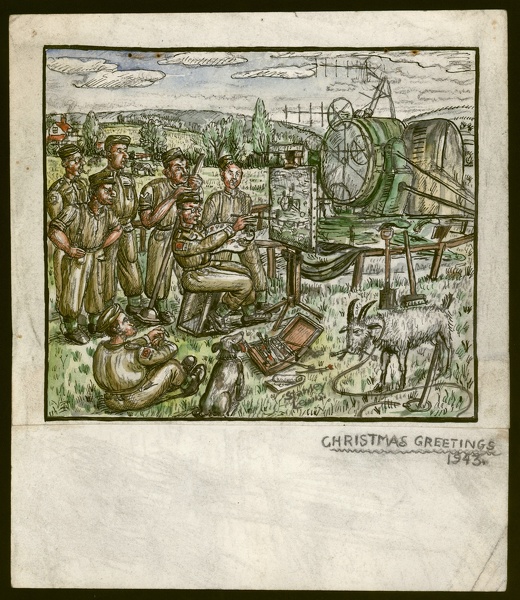Exhibited: WW2 - War Pictures by British Artists, Morley College London, 28 October -23 November 2016, cat 73.
Literature: The Unknown Artist: Stanley Lewis and his contemporaries, Cecil Higgins Art Gallery & Bedford Museum, 12th June - 5th September 2010. p113
WW2 - War Pictures by British Artists, Edited by Sacha Llewellyn & Paul Liss, July 2016, cat 73, page 112.
After training at Kinmel Park in Prestatyn, North Wales, in the Royal Artillery and later serving as a Battery Clerk for the 9th Ac Ac Regiment at Ranby, Stanley was posted to the 66th Searchlight Regiment (Gloucesters). ‘Lieut. Colonel MacWaters was in charge and he interviewed me concerning painting a picture commemorating the searchlight service during the war. He gave me a list of fifteen possible subjects for me to choose from and I choseMorning Maintenance on a Searchlight Site. He allowed a jeep with a driver to travel to different sites to choose a suitable location for the picture. Eventually I chose a site at Low Ham in Somerset. This site was most suitable as the great searchlight was situated in a Somerset apple orchard and looking North to the hilltop was the famous Glastonbuy Tor. I settled there and became one of the searchlight team and in my spare time I worked on the painting.’ At one point Colonel MacWaters asked Stanley to paint the searchlight in a less detailed manner fearing that it might cause a breach of security! Stanley refused to compromise leading the Colonel to insist the painting was accompanied by one of his officers when the painting was sent to London to be framed.

